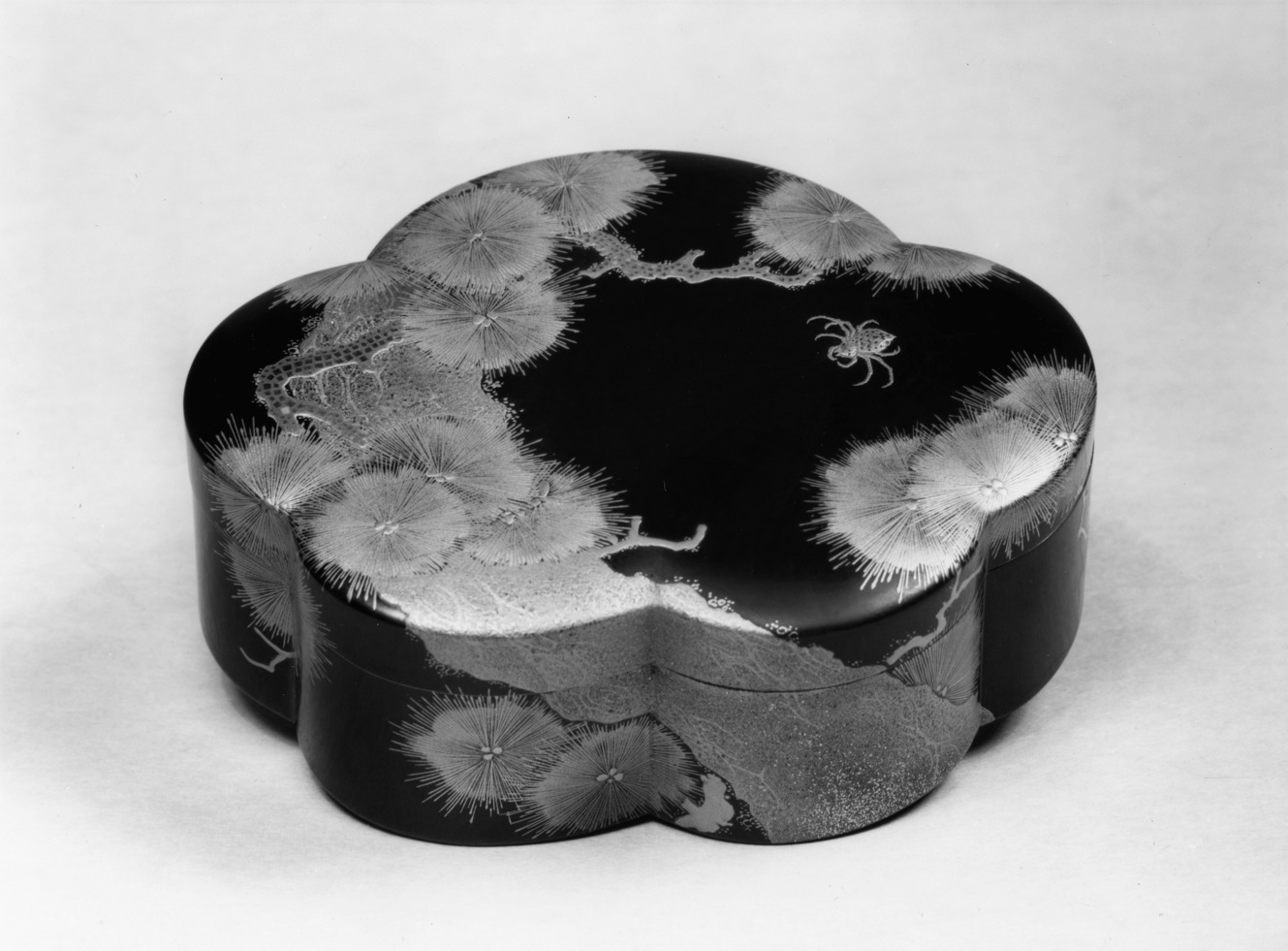Box for the Incense Game
(Japan and Korea )
The trunk of an aged pine tree has been folded over the edge of this small box. As it pushes upward from right to left, the trunk creates a void in the center of the cover--a void partly filled by the not-always visible incised lines of a spider web. The spider is poised to move toward a wasp that sits upon a pine-needle cluster. The different elements are a study in textural contrasts. The scumbled and mottled surface of the trunk is veined (by moss?) and varied in tonality, especially on the side of the box, where the range is from a high yellow to a rich golden brown. The branches, with their inlaid gold squares, are differently treated. A third texture is represented by the needle clusters, comprised of thin delicate lines.
The work of one of the most important painters of the 18th century, Maruyama Okyo (1733-95) sheds light on some of the stylistic qualities of this box. Its maker was an observer: Okyo was a pioneer in making studies--of insects, for example--directly from nature. The lacquer-maker wanted his substances to differ in their way as much as nature's: many of the forms in Okyo's paintings have a tangible presence because of the strong contrast of brushstroke types, especially in his paintings of pine trees. Okyo was also a master composer; his forms somehow seemed poised to make a dramatic leap out of the painting's boundary lines.
Lacquer-making was one of Japan's oldest crafts, and a beautiful box for writing utensils was the pride of every literate person. In the 18th and 19th centuries, an increasing proportion of production was devoted to the creation of boxes used in games involving aromatic woods that were burned as incense. Small lobed boxes of this sort were used to hold pieces of incense wood.
Provenance
Provenance (from the French provenir, 'to come from/forth') is the chronology of the ownership, custody, or location of a historical object. Learn more about provenance at the Walters.
Wakai, Exposition Universelle, Paris, 1878; William T. Walters, Baltimore, 1878, by purchase; Henry Walters, Baltimore, 1894, by inheritance; Walters Art Museum, 1931, by bequest.
Exhibitions
| 2014-2016 | From Rye to Raphael: The Walters Story. The Walters Art Museum, Baltimore. |
| 1878 | Exposition Universelle. Paris. |
Geographies
Japan (Place of Origin)
Measurements
H overall: 1 5/8 × W: 4 13/16 × D: 3 5/8 in. (4.2 × 12.2 × 9.2 cm); H base: 1 3/8 × W: 4 13/16 × D: 3 5/8 in. (3.5 × 12.2 × 9.2 cm); H lid: 1/2 × W: 4 13/16 × D: 3 5/8 in. (1.2 × 12.2 × 9.2 cm)
Credit Line
Acquired by William T. Walters, 1878
Location in Museum
Not on view
Accession Number
In libraries, galleries, museums, and archives, an accession number is a unique identifier assigned to each object in the collection.
In libraries, galleries, museums, and archives, an accession number is a unique identifier assigned to each object in the collection.
67.247




